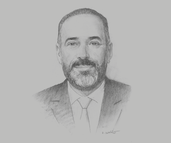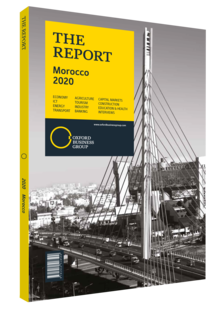Kamal Mokdad, CEO and Head of International Global Banking, Banque Centrale Populaire: Interview

Interview: Kamal Mokdad
What is the potential for growth across the African continent for Moroccan banks?
KAMAL MOKDAD: Today, sub-Saharan Africa is an area of expansion for Moroccan banks for several reasons. First, the business model developed by financial institutions in Morocco has demonstrated its resilience in terms of sustainability and its ability to support economic emergence through greater financial inclusion in urban and rural areas. Moroccan banks have developed a broad national network, allowing them to reach maturity, so it is natural that they now look to export this business model throughout Africa.
The second reason is the attractiveness of African economies with significant growth potential and a need for financing large-scale infrastructure projects. These economies are rapidly growing and have national programmes in key areas, such as infrastructure, education, health and energy, in which the banking sector can play a role in financing.
The third reason is opportunism. Many foreign banks are disengaging from Africa at the moment. This represents a historic opportunity for continental players with a solid financial base to penetrate these markets and fill the gap left by these companies.
It was thus a strategic decision for Moroccan banks to expand in Africa. In addition, this has allowed local subsidiaries to support Moroccan companies in their African expansion plans. Banks have been able to encourage telecommunications, insurance, real estate and pharmaceutical companies, among others, to expand, given their local network and the appropriateness of banking offerings.
How can banks adapt their offerings to the varied needs of African markets?
MOKDAD: Today, between 30% and 40% of net banking income for Moroccan banks is generated through their sub-Saharan subsidiaries. This was achieved by adapting offers in each market and leveraging the density of the network of Moroccan banks in Africa. Many criteria have to be taken into account – such as the banking penetration rate and the cost to serve, as well as purchasing power – in order to develop a relevant strategy for each country. This also includes introducing a wide array of digital services if the government allows it and if the market is prepared.
In Morocco the country has not based its model on digital but on a multitude of points of sale nationwide. It has a strong network that has been built over several decades, but the speed at which some other countries are developing allows them to leapfrog. With a rate of mobile telephony equipment that exceeds 100% in several countries, it was natural to think of delivering products through electronic channels instead of reproducing the Moroccan physical coverage model.
In what ways can the Moroccan banking sector contribute to the development of micro-, small and medium-sized enterprises (MSMEs)?
MOKDAD: We have redefined our models of support for entrepreneurship. Morocco has brought together a number of players to create an ecosystem favourable to entrepreneurship. It starts with banks providing loans to project holders, entrepreneurs and MSMEs at competitive rates, capped at 2%. Additionally, administrative costs and personal security deposits were also removed, and the central bank, Bank Al Maghrib, as well as the Caisse Centrale de Garantie are now providing financing and guarantees to companies with strong business plans.
New financial inclusion strategies will finally bring us within reach of non-urban areas, which will reduce the rural exodus. This access will come in the form of financial aid that will help companies in their development strategies. Thanks to a strong network throughout the country, the banking system can offer guidance to business leaders on projects and strategies that will create added value for rural areas.
You have reached the limit of premium articles you can view for free.
Choose from the options below to purchase print or digital editions of our Reports. You can also purchase a website subscription giving you unlimited access to all of our Reports online for 12 months.
If you have already purchased this Report or have a website subscription, please login to continue.

